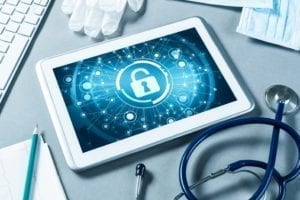As I mull over the value of health IT, as so many of my colleagues are doing during National Health IT week, I can’t help but wonder if we are missing the bigger picture. Health IT is a relatively niche term in the grand scheme of things; one that is passionately advocated, espoused, naysayed and even booed from time to time by a select few in the industry. (I say “few” because, in comparison with industries such as finance and telecom, health IT doesn’t yet have the same global brand recognition, and so is evolving in a smaller ecosystem.)
As technology becomes more ubiquitous, and the “Internet of Everything” slowly takes over our lives by integrating everything we say, do, purchase, plan for and act upon, I can’t help but also wonder if health IT will soon lose its value as a buzzword – at least in the eyes of consumers – in favor of more apropos phrases like “connected health” or “digital health.”
Healthcare, after all, is all around us. It’s in the apps we use to track our exercise regimens, the text we respond to in order to confirm a doctor’s appointment, the glasses next year’s graduating class of MDs will wear to surgery on a regular basis … it’s everywhere. Healthcare isn’t just in a hospital, or physician’s office or pharmacy or urgent care clinic. It’s coming to your car, your watch, your smart-er mobile phone, your wearable tech … the list could (and will) go on and on.
I think we’re shortchanging the concept if we think only in terms of EMR installations, ICD-10 codes or revenue cycle management systems. The value of health IT has increased exponentially in terms of the impact it is having and will have on just about every other industry out there. As such, its definition is becoming broader. Thanks to the Internet of Everything (aka the Internet of Things), it may one day flatten out entirely. I don’t think it’s too off the mark to consider that 50 years from now, “healthcare” will assume the integration of IT. There will be no separation of church and state, as it were.
I’m off on this tangent thanks to a policy memo I recently read by Michael Mandel and the Progressive Policy Institute. He writes: “[T]he Internet of Everything potentially has the capability of transforming ‘physical’ activities such as manufacturing, energy, transportation, healthcare and public sector services. [M]any of these industries have not shown much productivity acceleration in the Internet era.”
The memo also notes that “Cisco projects that there is $14.4 trillion in ‘value at stake’ over the next ten years in economic benefits for companies and countries that can successfully implement the Internet of Everything. Cisco’s calculations include better asset utilization, higher worker productivity, improved supply chain logistics, a better customer experience, and faster innovation.”
Sounds a lot like the goals of this healthcare transformation we all find ourselves struggling to move forward with.
Healthcare IT certainly has a high price tag, but I think we’ll begin to see, as connected health technologies spread out, that this price will diminish as adoption becomes pervasive. Will we question the value of health IT five years from now? Hopefully we’ll have moved beyond dollars and cents to lives saved, life expectancies increased and, finally, greater access to better care at negligible cost.














[…] About 60 percent of respondents to Gartner’s own recent CEO survey said the idea that the internet of things would replace millions of workers over the next decade-and-a-half was a “futurist fantasy,” according to SiliconANGLE. In health care, it’s hard to imagine that CIOs have much attention to devote to the internet of things amid the Meaningful Use and ICD-10 requirements they’re up against, although, as Jennifer Dennard wrote, health IT nowadays is much more than that. […]
[…] But as consumers pick up the wearables themselves, providers might want to focus on building a network which seamlessly integrate these devices, as it seems almost a given that consumers will buy them when they’re available and affordable. It will take years to get that right, so now it’s probably time to start. Get prepared for the Internet of everything! […]